There can be your advertisement
300x150
What the Initial Budget Shows at the Start of a Renovation: Decoding Numbers and Hidden Costs
How to Avoid Financial Traps and Achieve Desired Results
In our second episode of "Renovation Drive," we explore the financial side of transforming a 1950s Stalin-era apartment with Ksenia Shahmatova. When we proudly announced that we would stay within 3 million rubles for the renovation of an 80-square-meter apartment, many skeptically shook their heads. But even more shocking to some was the fact that we had already spent 150 thousand rubles before starting major work. Where does the money go when nothing is visible in the apartment yet? Why does the initial estimate rarely match final costs? And how to avoid financial surprises that can turn a renovation dream into a money nightmare? This is what our article today covers.
Watch all episodes of Renovation Drive here:
- Episode 1: Bought a Dead Stalin-era Apartment – What Went Wrong?
- Episode 2: Relocation: Which Decision Saved Our Stalin-era Apartment?
- Episode 3: Expensive Renovation Mistakes.
- Episode 4: Staying Within 3 Million Rubles? Finishing Touches.
Main Takeaways from the Article:
A real renovation of a 3-bedroom apartment starts with expenses of 5-10% of the total budget even before finishing work begins;
The cost of labor in Moscow is around 10,000 rubles per square meter (excluding materials);
Hidden costs often overlooked in estimates can increase the budget by 15-30%;
The average duration of an 80-square-meter apartment renovation is between 2.5 and 4 months with smooth coordination;
Proper budget distribution between rough and finishing work is key to a successful renovation.
150,000 Rubles "Into Nowhere": Where the First Money Actually Goes
When Ksenia revealed the amount of initial costs, it was a revelation even for us: "We have already spent 150,000 rubles on demolition waste removal, partial demolition, and small advances to workers."
And yet visually, nothing has changed in the apartment! This is where the first psychological barrier lies for many clients – misunderstanding that the initial phase of renovation often involves costs whose results are not visible in photos.
Let's examine initial expenses:
Demolition work: 40-60 thousand rubles
Waste removal and disposal: 30-50 thousand rubles
Advances to contractors: 30-50 thousand rubles
Instrumental inspection: 10-20 thousand rubles
As Ksenia notes: "These initial expenses are often not accounted for when planning the budget, and then people wonder why money runs out before the renovation even starts."
What Hidden Costs Hide Behind Work Prices: The Formula "10,000 per Square Meter"
One of the most important points in Ksenia's interview is her honest discussion about labor costs: "We try to keep the standard at 10,000 rubles per square meter. So for a 77 m² apartment, we would pay only the workers 770,000 rubles."
What's included in those 10,000 rubles per square meter:
Demolition of old finishes;
Preparation of all surfaces (walls, floor, ceiling);
Laying new coverings;
Painting work;
Tiling works;
Plumbing installation;
Electrical work.
What's NOT included in the labor cost:
Ceilings (drop or suspended);
Window replacement;
Heating radiator replacement;
Specialized works (installing air conditioners, smart home systems);
Material costs.
The figure "10,000 rubles per square meter" is the average market rate for Moscow in 2025 and can vary depending on work complexity, apartment condition, and quality requirements. In regions, this amount is usually lower at 6,000-8,000 rubles per square meter.
Renovation Timeline: When Plans Meet Reality
Another revelation from Ksenia concerns renovation timelines: "We're in mid-January now. I really want to finish by April 1st. That means about 2.5 months. But honestly, there might be some surprises."
Standard timelines for an 80-square-meter apartment renovation:
Demolition and preparatory work: 2-3 weeks;
Rough works (flooring, plastering, electrical): 3-4 weeks;
Finishing works (decorating, laying coverings): 4-6 weeks;
Final works (installing plumbing, doors, lights): 2-3 weeks.
Factors that often extend timelines:
Hidden defects discovered during demolition;
Delays in material delivery (especially for imported goods);
Permitting and modification approvals;
Seasonal factors (for example, New Year holidays);
Changes in the project during renovation.
As Ksenia admits: "The previous 80-square-meter apartment lasted 3.5 months because there were some complications."
Hidden Cost Items Not Mentioned in Standard Budgets
A standard renovation estimate usually includes materials and labor. But in reality, there are many additional expenses rarely mentioned by contractors.
Logistics costs: 50-100 thousand rubles
Unforeseen issues: 100-200 thousand rubles
Temporary housing: depends on renovation duration
Updating engineering systems: 150-300 thousand rubles
Approvals and documentation: 30-100 thousand rubles
Small expenses that add up: 50-100 thousand rubles
Secrets of Budget Allocation from Ksenia Shahmatova
Ksenia's experience shows that proper budget distribution is key to a successful renovation without financial stress.
- 60% of the budget — for rough work and engineering systems: "The main thing is a solid foundation. If you save on screed, plastering, and electrical work, you'll have to redo everything later."
- 30% — for finishing decoration: "This is everything that's visible: wallpapers, tiles, floor coverings, doors. Here you can find a compromise between price and quality."
- 10% — contingency for unforeseen expenses: "These funds should always be on standby. There are always unexpected situations in renovation."
Priorities for Expenses: Where to Save and Where Not to
Ksenia shares her philosophy of smart saving without compromising quality:
- Work Quality — cheap labor will lead to expensive rework;
- Engineering Systems — they must be safe and reliable;
- Base for Finishing — poor surface preparation will ruin even high-end materials.
Where You CAN Save:
- Finishing Materials — there are quality alternatives to premium brands;
- Furniture and Accessories — these can be bought later or replaced with more expensive options over time;
- Decorative Elements — they create atmosphere but don't affect functionality.
Additional Tips for Budget Optimization:
- Purchase Materials in Advance
"Many materials can be bought at a discount during sales. For example, if you know which tiles you'll use, buy them several months before laying." - Use Online Marketplaces
"Yandex.Market allows you to pay in installments, so the payment schedule can be chosen. This helps spread the financial load." - Prioritize Room Renovations "Not all rooms need to be renovated at once. Start with the most important: bathroom, kitchen, bedroom, and complete the rest later."
- Compare Offers from Different Contractors
"Always get several estimates from different companies or teams. The difference can be significant."
Expense Control: How Not to Lose Money
One of the most common problems is constant budget increases during renovation. Ksenia shares methods for control:
- Detailed Budget with Stage Breakdown
"Ask the contractor for a detailed calculation by each type of work and material, not just a total sum." - Stage-by-Stage Payment for Work
"Never pay the full amount in advance. Pay for each stage upon completion." - Document All Changes in Writing
"Any change in the project must be documented, including cost changes." - Personal Involvement in Key Material Procurement
"This not only helps control costs but also ensures that exactly the materials you chose are purchased."
Conclusion: Real Renovation Budget for a 3-Bedroom Apartment in 2025
Summarizing our financial breakdown, here are the main findings:
Real cost of full renovation for an 80-square-meter apartment in Moscow:
Labor: ~770,000 rubles (10,000 rubles/m²);
Materials: ~1,500,000 - 1,800,000 rubles;
Additional expenses: ~400,000 - 600,000 rubles;
Total: ~2,700,000 - 3,200,000 rubles.
Standard timelines for such a renovation:
Between 2.5 and 4 months with no major issues.
Budget distribution:
60% for rough work and engineering systems;
30% for finishing decoration;
10% contingency for unforeseen expenses.
As Ksenia emphasizes: "I want people to know and possibly apply this to themselves – that budget-friendly renovation is possible. And for those who fear renovation, they can watch and understand it's not that scary. And following a step-by-step instruction, they can also repeat this themselves."
Renovation is always a test for nerves and the wallet. But with proper planning, realistic expectations, and understanding of actual expense structures, you can navigate this path with minimal losses and maximum results. And remember the main rule of successful renovation: plan your budget to include more time and money than you initially think necessary. It's better to be pleasantly surprised by leftover funds than to face a catastrophic shortage at the final stage.
More articles:
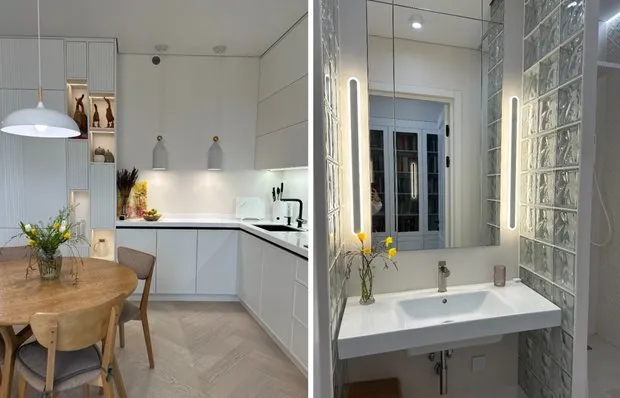 Thoughtfully Designed 115 m² Apartment for a Large Family: Stylish DIY Renovation
Thoughtfully Designed 115 m² Apartment for a Large Family: Stylish DIY Renovation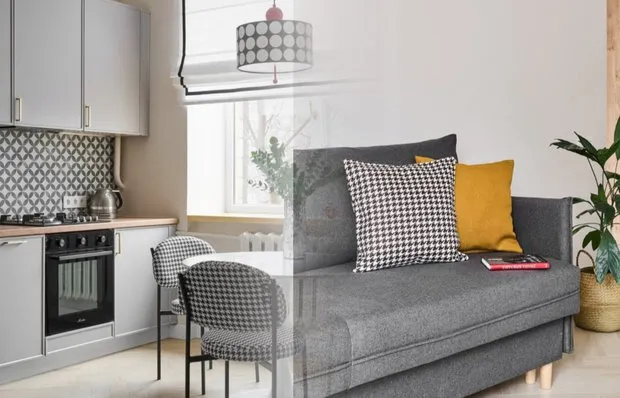 How a Stalin-era Apartment Was Transformed into a Stylish Euro-Style Flat for 3 Million
How a Stalin-era Apartment Was Transformed into a Stylish Euro-Style Flat for 3 Million How to Make a Compact Apartment Beautiful and Functional: 7 Amazing Ideas
How to Make a Compact Apartment Beautiful and Functional: 7 Amazing Ideas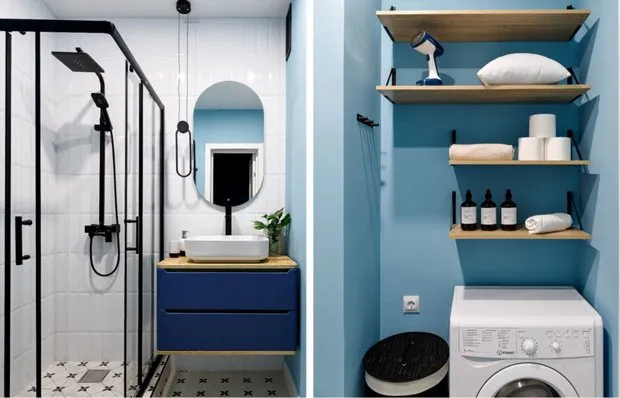 How to Beautifully and Budget-Friendly Decorate a Bathroom in a 36 m² Euro-Double
How to Beautifully and Budget-Friendly Decorate a Bathroom in a 36 m² Euro-Double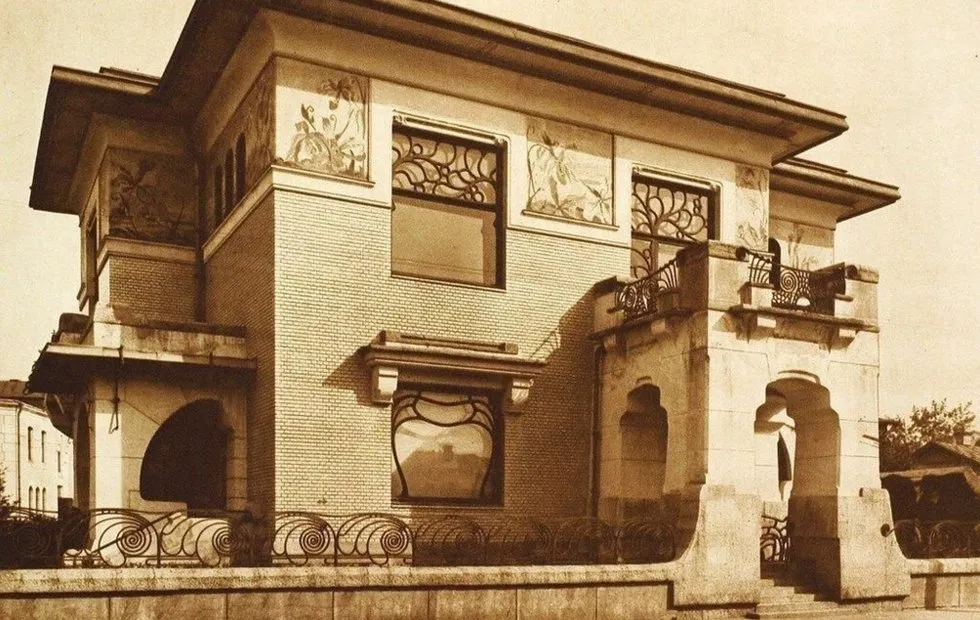 Secrets of the Ryabushinsky Manor: Schextel's Modern and Hidden Old-Believer Praying Room
Secrets of the Ryabushinsky Manor: Schextel's Modern and Hidden Old-Believer Praying Room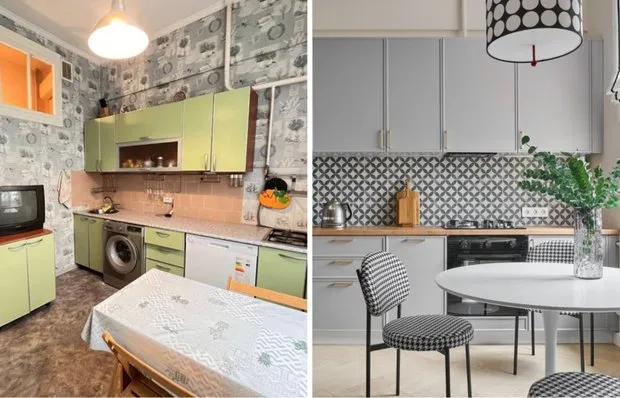 Before and After: Budget Kitchen Renovation in a Stalin-era Apartment
Before and After: Budget Kitchen Renovation in a Stalin-era Apartment Tea House Perlov (Income House) on Mezhytskaya Street — Chinese Motifs in the Center of Moscow
Tea House Perlov (Income House) on Mezhytskaya Street — Chinese Motifs in the Center of Moscow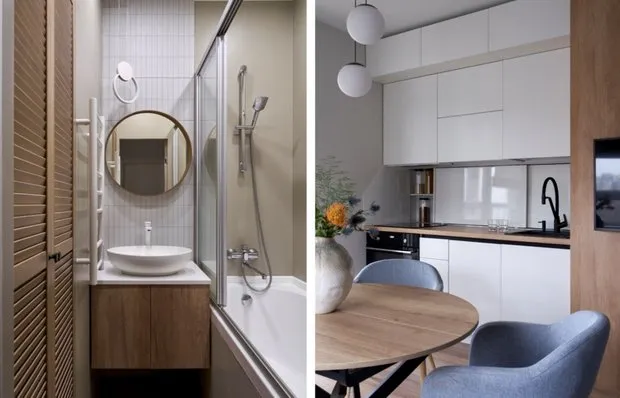 6 Unusual Storage Places in a Standard Apartment
6 Unusual Storage Places in a Standard Apartment